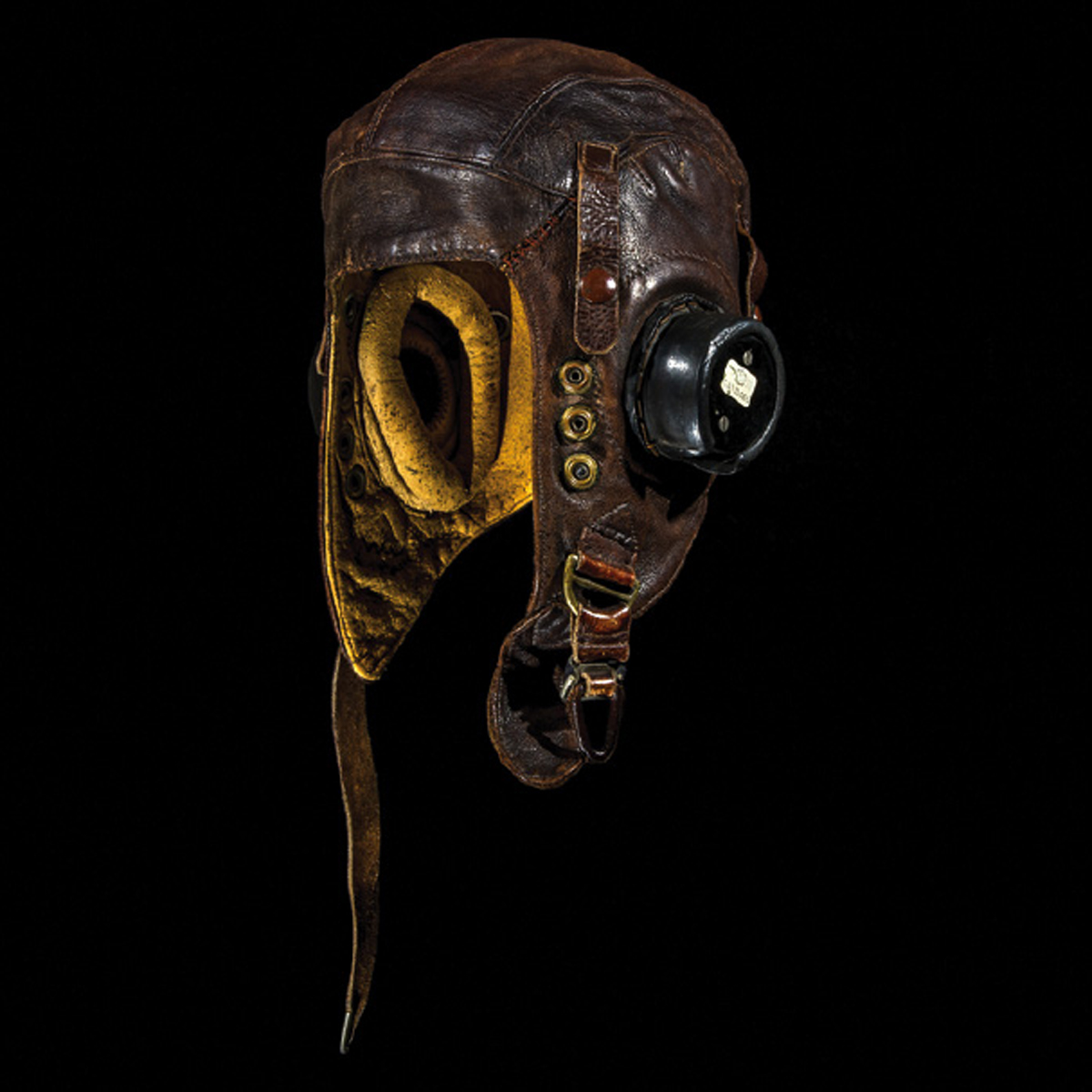

The Type C leather flying helmet, shown here, was issued in late 1941. Like its famous predecessor, it was made of dark brown leather and lined in smooth chamois. It marked a great improvement over the Type B both in form and function. The opening at the back of the helmet was eliminated and an elastic cord was inserted. The leather chinstrap and the Bennett buckle continued to be part of the design. Most notably, the protruding zippered earpieces were eliminated, being replaced by moulded rubber cups which allowed communications receivers to be tightly slid into position to minimise outside noise interference. The helmet was still manufactured without communications wiring and wiring apparatus (comprising heavy loom cord and plug) was needed to connect the receivers to the cockpit radio. A large, bell-shaped microphone was inserted into the oxygen mask to allow pilot voice communications. The RAF did not issue helmets with factory-wired communications systems until 1944. The Type C helmet was often worn with the Mark IV goggles and a Type E oxygen mask. The helmet had two sets of snap-fastening straps that were specially designed to accommodate the Mark IV goggles. A strap sewn to the back of the helmet held the goggles in place, reducing slippage during operations. The Type C helmet continued to be worn until the end of the war, but later RAF goggle designs rendered the forward goggle straps unnecessary.